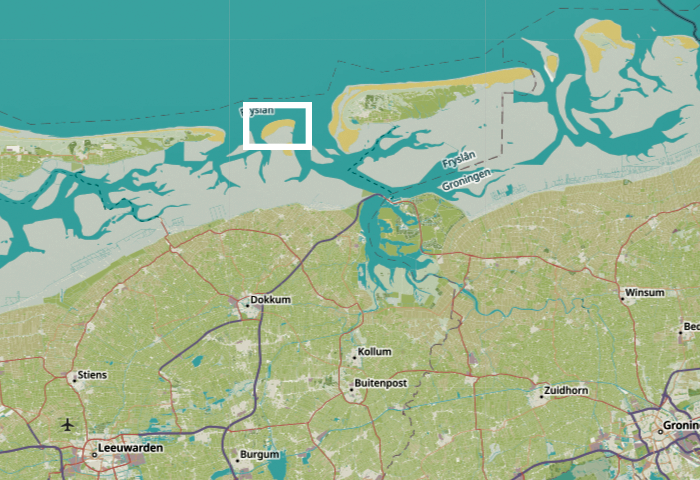Rescuing the Wadden sea
Fridges from the sea
The beach is littered with refrigerators, fake leather handbags, shoes, and a myriad of other products from the containers. But what really stands out is all the polystyrene. ‘It was like the beach was covered in snow’, says diver Aline Joustra. ‘I got a lump in my throat, it was so awful.’
Together with hundreds of others, members of the student diving organisation GBD Calamari are cleaning up Rif, a sandbank between the islands of Schiermonnikoog and Ameland.
People aren’t normally allowed on Rif, but there was an exception on Saturday. Seal centre Pieterburen had been planning the clean-up for weeks. ‘After the disaster with the containers the problem got ten times as bad’, says Calamari member Sander van Dijk, ‘but the number of volunteers that helped us clean increased tenfold as well.’
Underwater rubbish
Van Dijk is the education officer at the seal centre and works as a diving instructor at Calamari. ‘Divers are very familiar with the consequences of plastic rubbish in the sea. They encounter it underwater.’ Many of the organisation’s members are biology students. ‘They know a lot about the underwater ecosystem and the changes taking place. It’s a topic of discussion over drinks and on the weekends. It’s on everyone’s minds.’
Aline Joustra studies coastal and marine management and has been helping with the clean-up efforts for the past three days. ‘It’s terrible what happened, this amount of rubbish is really damaging. It’s a real shame, especially in an environment as interesting as the Wad.’
Biology student Mees van der Donk agrees: ‘I’m still heartbroken. The Wadden Sea area is a world heritage site with unique ecosystems that will probably suffer the consequences of this pollution.’
Handbags
The cleaners have found many handbags, shoes, and socks, among other things. Van Dijk: ‘These bags are brand new. The tags were still on; they’re worth like a hundred euros. It’s so weird that something that used to be so valuable is now just trash.’
‘Nobody is collecting stuff for themselves; we’re committed to cleaning up’, says Van Dijk. Some people did take some socks as a memento. ‘You can just wash those.’
Cold feet
Van der Donk: ‘The boat couldn’t get close enough to the beach on the way there, so we had to jump in the water. No one had any waders, so our feet were very cold.’ There was also a stiff wind, ‘but you don’t feel that when you’re working. You’re working so hard that you automatically get warm.’
Van Dijk wasn’t bothered by the weather either: ‘It was such a team effort, and all for a good cause. Who cares about bad weather?’
Attention
The support from all over the Netherlands served as motivation. Joustra: ‘It’s really great how many people think this is a problem as well and want to help. Two women came all the way from Apeldoorn, which was great.’
Van Dijk is glad the issue is getting all this attention: ‘The phone is ringing off the hook at the seal centre. The Wadden Sea was polluted before this and there were ongoing efforts to clean that up, but now people are paying attention.’
He hopes people stay aware, though. ‘We’ve got months of work ahead of us. There is also a storm coming, so we’re expecting more rubbish to wash up on Thursday.’
Van Dijk is asking for students to come help in the clean-up efforts. Seal centre Pieterburen announces new actions on its Facebook page. The next clean-up will probably take place on Thursday.


